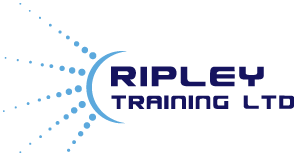What do companies like Virgin, First Direct and Pret a Manger all have in common? They continuously deliver improved profits and gain market share by providing outstanding customer service. Understanding your customers, their needs and expectations is therefore crucial to the ongoing success of your business. As technological and digital advancements are made, and service capabilities become greater, customer expectations rise with it.
Companies like the ones mentioned above share some core competencies, such as the focus on identifying what their customers expect, and constantly improving this process as well as the outcome of their service.
So, to get started in understanding your customers’ expectations, ask yourself these questions:
• Do you know how satisfied your customers are with your products/services?
• Do you have any proof of this?
• Do you operate a Customer Satisfaction Policy?
• Do you hold customer satisfaction reviews?
• To what extent do you think you are meeting or exceeding customer expectations?
• How does customer satisfaction feedback drive your customer service planning, new product development, and/or marketing strategy?
Even if this is something you haven’t focused on in the past, simply by asking yourself and your team these questions will start to make you more customer-oriented and discover ways to improve your service if there are any issues identified. For example, take the opportunity to research where the gap is between your existing quality of customer service, and:
• The minimum quality required by your customers, and/or
• The ideal quality required by your customers, and/or
• The quality of service that would encourage your competitors’ customers to start buying from you!
Then, work out if increasing the quality of your service would be cost effective, and what actions will profitably build your business.
Profitable Customers
Speaking of profitably building your business, what’s important here is to determine what a ‘quality service’ means to each and every segment of your audience. In particular, understanding what it means for your most profitable customers, who:
• Generate 80% of your profits
• Make up a large proportion of your business advocates
So how can you manage customer expectations?
You need to get a more accurate reflection and understanding of the needs of each customer segment, ideally each individual customer. You can do this by:
• Encouraging regular customer feedback – this could be done on the phone with customer service employees, or via an email survey, for example.
• Actively encourage customers to complain – then fix the problem, and make sure they go away fully satisfied.
• Set your business a service promise/service agreement – and then tell every customer about it! For example:
o Commit to delivery deadlines (Remember not to over promise and under deliver – this should be the other way round!)
o Guarantee accuracy of information on your website
o Respond to emailed enquiries within a set number of hours
o Include return guarantees
o Include personal security/personal data guarantees (if appropriate)
o Include a price promise
Improve Customer Service with Ripley Training
If you would like to find out more about how to manage and understand customer expectations and how this can increase and improve your business then our Excellent Customer Service course is right for you. Alternatively, if you would like to improve how you interact with customers by becoming a better listener, asking effective questions and developing robust negotiation skills, then our Assertiveness Skills course may be what you’re looking for. If you’re not sure which course is right for you, we provide a range of high quality and accessible training to suit your business’ needs. Get in touch today for more information.

